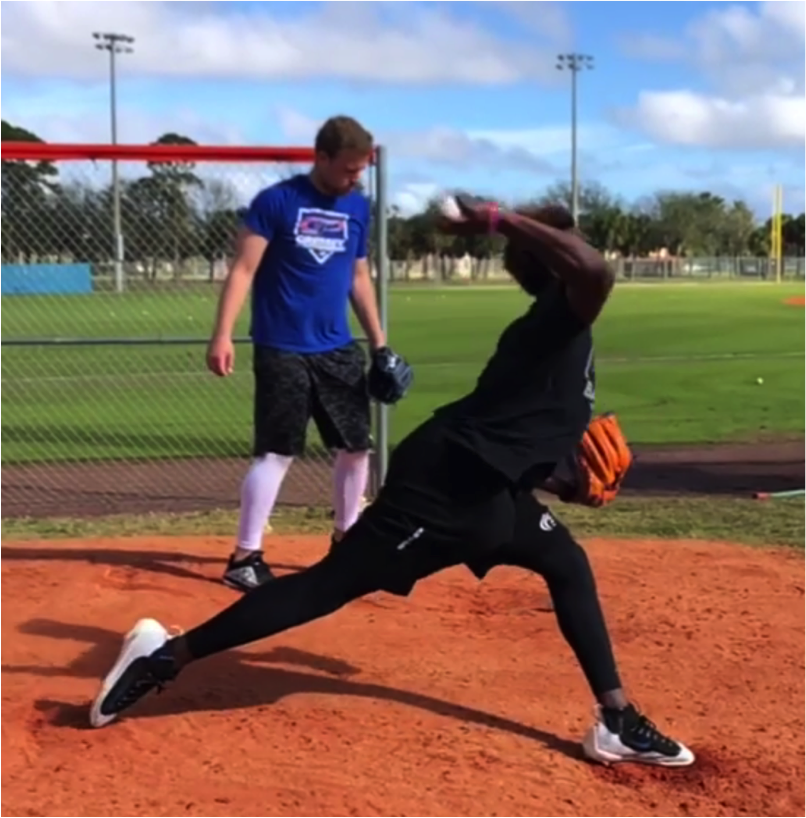
5 Reasons for the Increase in Lat Strains in Baseball Pitchers
There have been some noteworthy lat strains in MLB over the past few years, and this trend isn’t showing any signs of letting up. Here are a few reasons why they’re occurring at such an alarming rate.
1. Better Diagnosis
Any time a diagnosis becomes more “accepted,” doctors know to look for it more immediately. In 2011, Jake Peavy was the first player to actually tear the lat off the humerus and have surgery on it, but now we’re actually seeing 1-2 of these each year in guys who come to Cressey Sports Performance for consultations (on top of guys who have lower grade lat strains). In the past, a lot of doctors would mistake lat strains for rotator cuff injuries or biceps tendon issues (because the lat attaches on the front of the humerus). Sometimes, lat injuries would be missed on MRIs because the attachment is far enough down the humerus that a regular shoulder MRI wouldn’t cut wide enough. In short, better identification and subsequent diagnosis are always a big reason why a class of injuries “surges.”
2. Harder Throwers
Lat recruitment during acceleration is substantially higher in high level throws than it is in amateur pitchers. In particular, as lot of elastic energy is put into lat during the lay-back phase of throwing while it works as an anterior stabilizer of the shoulder as it prepares to unleash that energy into powerful internal rotation and horizontal adduction.
Sprinters who run fast pull hamstrings more often. Basketball players who jump high increase their risk of Achilles ruptures. It shouldn’t be a surprise that harder throwers have a higher incidence of lat strains.
3. Inappropriate Strength Training
With each passing day, weight training gets more and more “accepted” in baseball populations, and I absolutely love it. Unfortunately, that means a lot of inferior programs get implemented, and nothing is more inferior in a baseball strength and conditioning setting than programs that are way too lat dominant. If you’re doing pull-ups, bench presses, heavy deadlifts, farmer’s walks, walking dumbbell lunges – and then coaching all your rows and arm care exercises to be very lat dominant, you’re really just exacerbating all the negative adaptations we see in throwers. If you look around your weight room and see a ton of guys with limited shoulder flexion, that should be a red flag.
4. Poorly Executed Arm Care Programs
Lats are sneaky, as they’ll find a way to creep into a lot of arm care exercises. You’ll see people “tug down” (extension/adduct) the humerus (upper arm) during external rotation exercises using the lat when it should be relaxing to allow the arm to externally rotate.
You’ll see hands creeping toward the midline (shoulder internal rotation) during wall slide variations – when the lat should be relaxing to allow “clean” overhead motion to take place.
You’ll see individuals lock the scapula down into depression during prone trap raises instead of allowing it to posterior tilt.
And, in the most commonly butchered exercise by every lat strain pitcher I’ve ever seen, you’ll see the humerus tugged down during the prone horizontal abduction (when it should be at 90 degrees).
These examples should help to demonstrate that we’ve had a lot of success bringing lat strain injuries back to full function not only because of our quality manual therapy, but also because we know how to prescribe and meticulously coach the exercises that are so important for these individuals to master.
5. Weighted Balls
Weighted ball programs increase external rotation quickly (particularly in hypermobile throwers) and the lat – as one of the anterior stabilizers of the shoulder – is one structure that takes on the brunt of the load. When external rotation increases quickly and high speeds are involved, the lat at lay-back is analogous to the Achilles tendon of a basketball player that lands on a heavy dorsiflexed ankle; it just can’t “give” any more. If you’re a visual learner (and don’t have a weak stomach), check out the 1:40 mark in this video to see what crazy eccentric stress at the end-range of a joint can do.
Now, imagine he’s an untrained 14-year-old working at these speeds and you put a 100-pound weight vest on him; do you think it’ll turn out well?
Weighted balls are awesome – when they’re integrated at the right times, at the right loads, in the right dosages, with the right athletes who have earned the right to use them.
Closing Thoughts
If you look at these five contributing factors – and exclude the one (better diagnosis) that’s actually a good thing – you’ll realize that we have three that are completely in our control. Coach exercises correctly, prescribe strength and conditioning exercises appropriately, and integrate weighted baseball work the right way. If we do these three things correctly – and make sure to take care of tissue quality and length in our throwers – I firmly believe we can completely prevent lat strains, and that’s been verified by our experience at Cressey Sports Performance.





